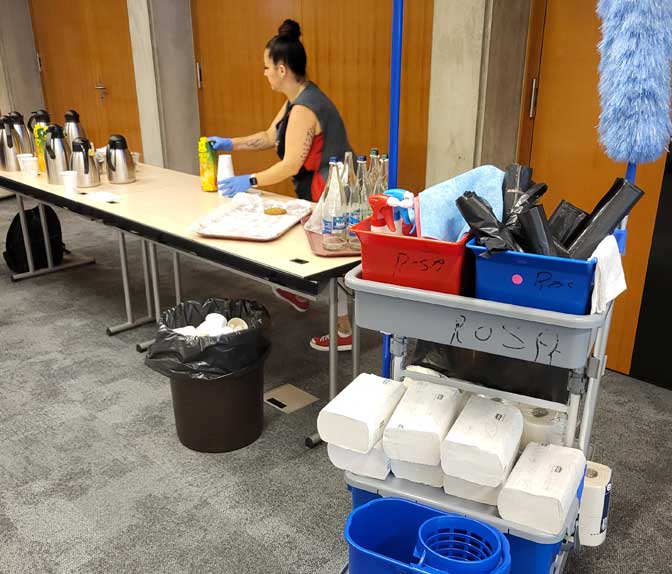
Cancer studies have neglected the workplace risks faced by women. Hazards editor Rory O’Neill looks at new evidence of the damaging consequences for prevention, compensation and women’s health.
A rare study of occupational hazards and ovarian cancer has found new evidence that many common jobs undertaken by women are associated with an elevated risk.
After accounting for other risk factors, calculations using the Canadian job-exposure matrix (CANJEM) confirmed that working for 10 or more years as a hairdresser, barber, beautician and in related roles was associated with a three-fold higher risk, while employment for 10 or more years in accountancy was associated with a doubling in risk, and working in construction with a near tripling in risk.
Similarly, long term work in the clothing industry, including embroidery, was associated with an 85 per cent heightened risk of developing the disease while working in sales or retail was associated with heightened risks of 45 per cent and 59 per cent respectively.
Heightened risks of more than 40 per cent were observed for high cumulative exposure (8 or more years) – compared with none – to 18 different agents.
These included talcum powder; ammonia; hydrogen peroxide; hair dust; synthetic fibres; polyester fibres; organic dyes and pigments; cellulose; formaldehyde; propellant gases; naturally occurring chemicals in petrol and bleaches.
The authors of the study conclude their results “suggest that employment in certain occupations and specific occupational exposures may be associated with increased risks of ovarian cancer.”
Drs Melissa Friesen and Laura Beane Freeman of the US National Cancer Institute, in a linked commentary in the journal, note there are wider lessons from the study.
“The limited representation of women in occupational cancer research studies has been recognised for decades,” they write.
“Unfortunately, this remains true today for many cancer sites and workplace exposures despite the fact that in 2021 women made up 40 per cent of the global workforce, with percentages in some countries much higher.”
The commentary on the ovarian cancer study notes it “reminds us that while the lack of representation of women in occupational cancer studies – and indeed, even potential strategies to address this issue – have been long recognised, there is still a need for improvement in studying women’s occupational risks.
“By excluding women, we miss the opportunity to identify risk factors for female specific cancers, to evaluate whether sex-specific differences in risk occur, and to study exposures occurring in occupations held primarily by women.”
There is a price to pay. Occupational cancer compensation schemes rarely compensate women. For others, it is a deadly oversight.
- Leung L, Lavoué J, Siemiatycki J, and others. Occupational environment and ovarian cancer risk, Occupational and Environmental Medicine, volume 80, pages 489-497, 2023.
- Friesen MC, Beane Freeman LE. Identifying occupational risk factors for cancer in women: a need for further action, Occupational and Environmental Medicine, volume 80, pages 522-523, 2023.
